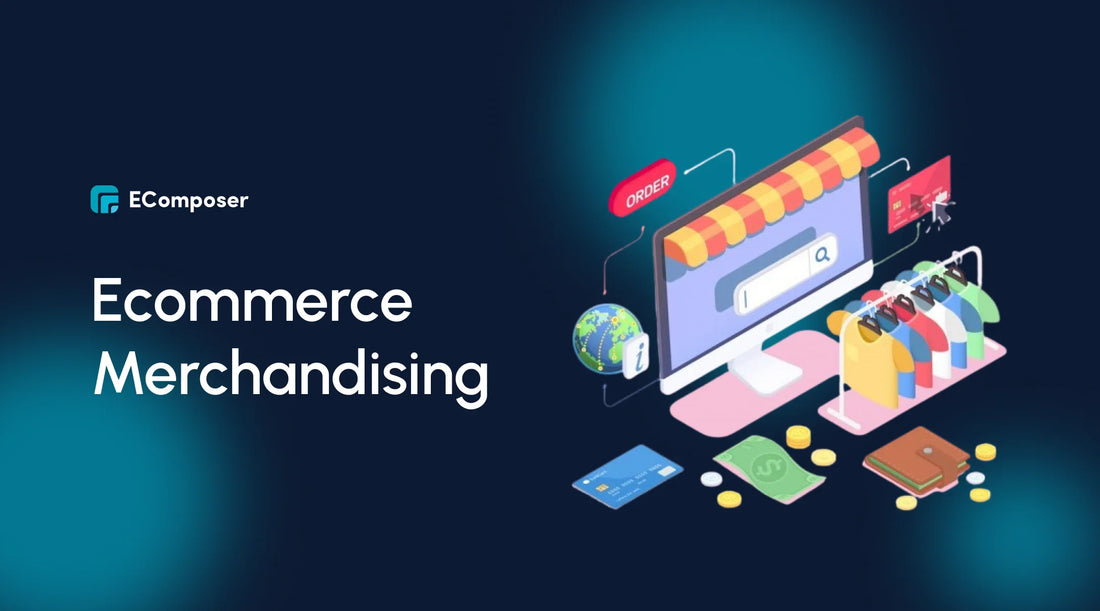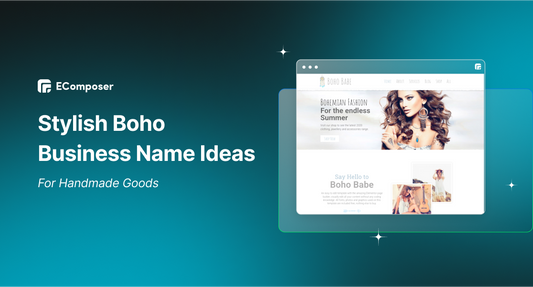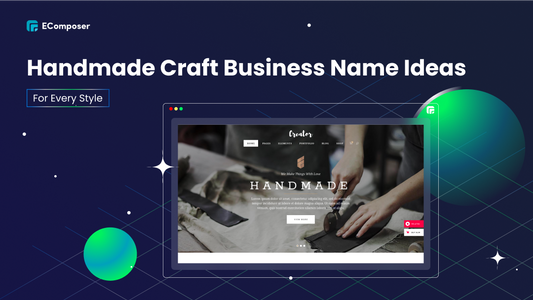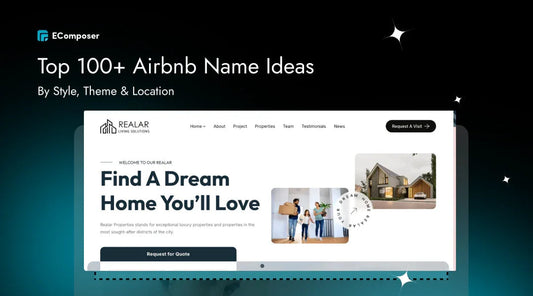Ecommerce Merchandising Tips to Elevate Your Online Store

Table Of Contents
Ecommerce merchandising is the art and science of presenting your products to maximize online sales and customer engagement. As the digital marketplace becomes increasingly competitive, mastering merchandising techniques is crucial for standing out and driving conversions. In this guide, we'll explore everything you need to know about eCommerce merchandising, from the core elements of a successful strategy to the latest trends and tools to help elevate your online store. Stay tuned!
What is eCommerce merchandising?

Ecommerce merchandising is the strategic process of showcasing and marketing products in an online store to boost sales and improve the customer journey. It encompasses various strategies aimed at capturing attention, engaging shoppers, and turning them into customers. Essential components of eCommerce merchandising include:
- Product Selection: Choosing the right product mix based on market demand and customer preferences.
- Product Presentation: Displaying products with high-quality images, detailed descriptions, and engaging content to make them appealing to potential buyers.
- Pricing Strategy: Setting competitive prices, offering discounts, and creating special promotions to incentivize purchases.
- User Experience (UX): Designing an intuitive and enjoyable shopping experience through easy navigation, effective search functionality, and mobile optimization.
- Personalization: Tailoring product recommendations and marketing messages based on customer behavior and preferences.
Effective eCommerce merchandising helps optimize the online shopping journey, increase customer satisfaction, and drive higher sales and revenue.
Importance of eCommerce merchandising for online success
Boosts Sales and Revenue:
- Effective Presentation: High-quality images and detailed descriptions make products more attractive, leading to increased conversions.
- Cross-Selling and Upselling: Strategically positioning related or complementary products can increase the Average Order Value (AOV).
Enhances Customer Experience:
- Intuitive Navigation: A well-organized layout and easy-to-use search features help customers find products quickly and efficiently.
- Personalization: Tailoring product recommendations based on browsing history and preferences makes the shopping experience more relevant and enjoyable.
Builds Brand Identity and Loyalty:
- Consistent Presentation: A cohesive and visually appealing store design reinforces brand identity and helps build trust with customers.
- Engaging Content: Thoughtful product descriptions and visuals create a connection with customers, fostering brand loyalty.
Drives Traffic and Visibility:
- SEO Optimization: Optimized product listings improve search engine rankings, increasing organic traffic to your site.
- Promotions and Offers: Well-placed promotions and discounts attract customers and encourage repeat visits, driving more traffic.
Optimizes Inventory Management:
- Data-Driven Decisions: Analyzing merchandising data helps identify best sellers and trends, improve inventory management, and reduce stock issues.
- Reduced Overstock and Stockouts: Effective merchandising ensures popular items are well-stocked while minimizing overstock on less popular products.
The Key Elements of eCommerce Merchandising

The key elements of eCommerce merchandising include several critical components to create a practical online shopping experience. Here are the main elements:
Product Selection
- Curated Offerings: Choose products that meet market demand and align with customer preferences. A well-curated selection ensures relevance and appeal to your target audience.
- Seasonal and Trend-Based Products: Incorporate seasonal and trending products to keep your inventory fresh and engaging.
Product Presentation
- High-Quality Images: Use clear, high-resolution images that showcase products from multiple angles. Include zoom functionality to allow customers to view details closely.
- Detailed Descriptions: Provide comprehensive product descriptions that cover key features, benefits, and specifications. Use persuasive language to highlight the value of the product.
- Videos and 360-Degree Views: Incorporate videos or interactive 360-degree views to give customers a more immersive experience.
Pricing Strategy
- Competitive Pricing: Set prices that are competitive with market standards. Regularly review and adjust pricing based on market conditions and competitor actions.
- Discounts and Promotions: Implement strategic discounts, bundle offers, and limited-time promotions to encourage purchases and boost sales.
User Experience (UX)
- Intuitive Navigation: Design a user-friendly layout with clear categories and search functionality to help customers find products quickly.
- Mobile Optimization: Ensure your eCommerce site is fully optimized for mobile devices, providing a seamless shopping experience across all platforms.
Personalization
- Product Recommendations: Use algorithms and customer data to offer related product suggestions based on browsing history and previous purchases.
- Tailored Marketing Messages: Send targeted email campaigns and promotions that reflect individual customer preferences and behaviors.
Visual Merchandising
- Store Layout: Create an attractive, organized store layout highlighting featured products and promoting easy navigation.
- Visual Hierarchy: Use design principles such as color contrast, typography, and spacing to draw attention to key elements like sales, new arrivals, or popular products.
Inventory Management
- Stock Availability: Ensure that high-demand products are adequately stocked and manage inventory levels to avoid stockouts and overstock situations.
- Real-Time Updates: Use inventory management tools to provide real-time updates on product availability and streamline restocking processes.
Customer Reviews and Ratings
- Customer Feedback: Encourage customers to leave reviews and ratings for products. Positive reviews build trust and provide social proof, while feedback can help identify areas for improvement.
By focusing on these key elements, eCommerce businesses can create a compelling shopping experience that increase sales, enhances customer satisfaction, and supports online success.
Strategies to Enhance eCommerce Merchandising

Enhancing eCommerce merchandising involves implementing strategies that improve product presentation, optimize user experience, and drive sales. Here are key strategies to strengthen your eCommerce merchandising:
Leverage Data Analytics
Utilize data analytics to gain insights into customer behavior, preferences, and purchasing patterns. Analyzing data such as browsing history, past purchases, and demographic information allows you to make informed decisions about product selection and presentation.
Strategy
- Analyze Customer Trends: Utilize tools like Google Analytics, heatmaps, and customer surveys to track and understand shopping behaviors. Identify which products are trending, which seasons drive specific sales, and how customer preferences change over time. This data helps tailor your inventory to meet demand and align with consumer interests.
- Optimize Product Placement: Use analytics to determine which products receive the most views and interactions. Position high-performing items in prominent spots on your homepage or category pages. Adjust product visibility based on performance metrics to maximize engagement and sales.
Implement A/B Testing
A/B testing compares two versions of a webpage or product listing to determine which performs better. This approach helps optimize various elements of your site for better user engagement and higher conversion rates.
Strategy
- Test Different Layouts: Experiment with homepage layouts, product page designs, and navigation structures. For example, test variations of product grids versus list views to see which format leads to more clicks and conversions. Analyze performance metrics like click-through rates (CTR) and conversion rates to identify the most effective layout.
- Evaluate Product Descriptions: Create different versions of product descriptions with varying lengths, tones, and styles. Test which version generates more interest and drives higher sales. Consider including customer reviews, benefits, and usage scenarios to see what resonates best with your audience.
Enhance Personalization
Personalization involves tailoring the shopping experience to individual customers based on their behavior, preferences, and purchase history. This approach enhances relevance and engagement, leading to increased conversions.
Strategy
- Customized Recommendations: Implement recommendation engines that use algorithms to suggest products based on previous browsing and purchase history. For instance, if a customer frequently browses for sports gear, show related products like running shoes or fitness trackers on their homepage.
- Personalized Marketing: Use customer segmentation to send targeted email campaigns and promotions. For example, create customized email offers for customers who have previously bought specific items, such as a discount on related accessories or complementary products.
Optimize for Mobile
Optimizing your eCommerce site for mobile devices is essential with the growing number of mobile shoppers. A mobile-friendly site ensures a smooth and enjoyable shopping experience across all devices.
Strategy
- Responsive Design: Use responsive web design techniques to ensure your site adjusts fluidly to different screen sizes and orientations. This includes optimizing images and layouts for mobile screens and ensuring that all interactive elements are easy to use on touch devices.
- Speed and Performance: Optimize your site’s load times by compressing images, leveraging browser caching, and reducing the use of heavy scripts. Fast load times are crucial for retaining mobile users and reducing bounce rates, which can impact your search engine rankings and user satisfaction.
Learn more: How to speed up your online store
Utilize Visual Merchandising Techniques
Visual merchandising techniques enhance product presentation and attract customer attention. Effective visual merchandising creates a visually appealing and engaging shopping environment.
Strategy
- High-Quality Imagery: Invest in professional photography to capture your products in high resolution. Use multiple images per product, including close-ups and lifestyle shots that show the product in use. High-quality visuals help customers make informed purchase decisions by providing a clear product view.
- Effective Store Layout: Design your store layout to highlight essential products and promotions. Use grid systems or carousel displays to showcase featured items. Ensure the layout is intuitive, guiding customers to effortlessly popular or high-margin products.
Incorporate User-Generated Content
User-generated content, such as customer reviews and social media posts, adds authenticity and credibility to your product offerings. This content builds trust and encourages new customers to make purchases.
Strategy
- Feature Customer Reviews: Integrate review and rating systems on product pages. Highlight top reviews and showcase customer feedback to build credibility and provide social proof. Respond to positive and negative reviews to show that you value customer input and are committed to improving your products and services.
- Showcase Customer Photos: Encourage customers to share photos of their purchases on social media and tag your brand. Feature these photos on your product pages or a dedicated UGC gallery. This adds authenticity and helps potential customers visualize the product in real-life scenarios.
Create a Seamless Omnichannel Experience
An omnichannel approach integrates various shopping channels to provide customers with a consistent and cohesive experience. This strategy ensures that customers can engage with your brand seamlessly across different touchpoints.
Strategy:
- Unified Inventory: Implement a centralized inventory management system that updates in real-time across all sales channels. This helps avoid issues such as overselling and ensures accurate stock information is always available to customers.
- Consistent Branding: Maintain consistent branding, messaging, and customer service across your website, mobile app, social media, and physical stores. Consistent experiences build brand recognition and trust, making it easier for customers to transition between channels seamlessly.
Optimize Checkout and Payment Processes
A smooth and efficient checkout process is crucial for minimizing cart abandonment and ensuring a positive customer experience. Streamlining payment options and simplifying checkout steps enhance convenience and drive conversions.
Strategy:
- Simplify Checkout Steps: Reduce the steps required to complete a purchase by minimizing form fields and offering options for guest checkout. Implement auto-fill features and progress indicators to make the process as smooth and efficient as possible. You can create one page checkout to streamline the payment process.
- Offer Flexible Payment Options: Provide a variety of payment methods, including credit cards, digital wallets (like PayPal or Apple Pay), and Buy Now, Pay Later (BNPL) options. This caters to different customer preferences and can help increase conversion rates by offering more convenient payment choices.
By implementing these strategies, you can significantly enhance your eCommerce merchandising efforts, leading to improved customer satisfaction, increased sales, and a stronger competitive position in the market.
Wrapping Up
Ecommerce merchandising is a critical component in building a successful online store. By mastering the fundamentals - from selecting the right products and presenting them effectively to implementing strategic pricing and enhancing user experience - you can create a shopping environment that captivates and converts. Emphasizing personalization, visual appeal, and seamless inventory management ensures your site remains relevant and engaging. With the right strategies, you’ll be well-equipped to drive sales, foster customer loyalty, and achieve online success.






















0 comments